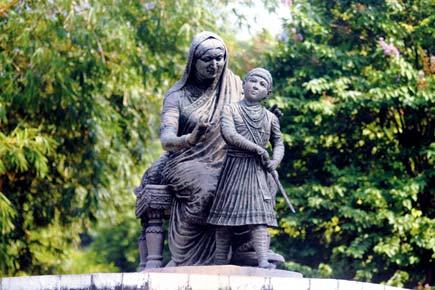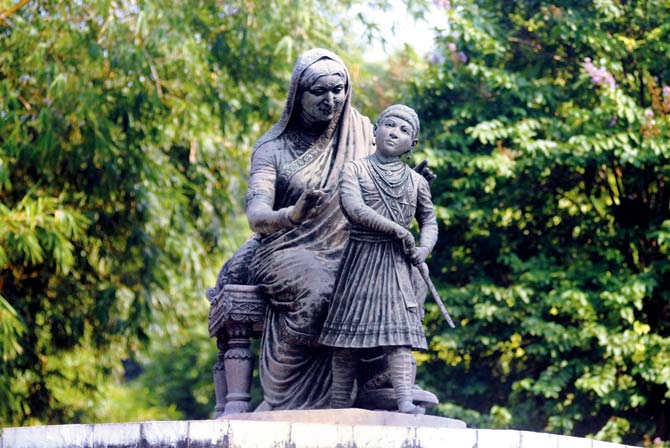It's A misnomer wherein people attribute the adjective ‘Concrete Jungle’ to Mumbai. I do not agree to this definition


Jijamata and her son Shivaji's statue at the Byculla zoo

ADVERTISEMENT
It's A misnomer wherein people attribute the adjective ‘Concrete Jungle’ to Mumbai. I do not agree to this definition. Right from the day of the British Raj, lovely gardens and parks were established in the reclaimed seven-island city. Victoria Gardens or popularly known to Maharashtrians as Ranichi Baug meaning the Queen’s Gardens, was established in 1861 in the multi-cultural Byculla region. Even after 155 years, with a sprawling area of 53 acres, it is probably the largest green space in the island city.
The eminent botanist, Dr Marselin Almeida and his team of students have documented a whopping 853 plant species belonging to 149 families with 3,213 trees representing 286 species, including 30 endangered species in the Ranibaug campus. With such floral diversity, it can easily be considered an international botanical garden. Sadly, there are no plant conservation, research or outreach activities undertaken here, that could help it qualify among elite botanical gardens of the world. What compounds the apathy is the lack of interest among ordinary citizens or even the 50-odd botany teaching Mumbai colleges in utilising this living laboratory to facilitate plant studies.
The Veermata Jijabai Bhosale (VJB) Udyan Zoo established in 1873, inside the campus, is one among the oldest and most visited zoos in India, with an annual footfall of over 10 lakh people. Back during the menagerie days, the enclosures were heavily cramped iron cages. But in keeping with the evolution of zoological parks across the world, the Byculla Zoo has been regularly renovated to house their animals in much larger, naturalistic, and modern, open-moated enclosures. Like all ancient zoological parks, VJB Zoo began as a recreational space, and has over the years incorporated educational and outreach elements. The zoo satisfies an important connect with nature for kids from the poor communities and is hailed as an important tourist destination. If utilised well, it can be an interesting way to acquaint students with conservation concerns about animals (birds, reptiles, mammals) and give them access to observe their behaviours, diets and even research veterinary diseases or medicines. Sadly, here too the low cost facility is not satisfactorily utilised by educators to instill a keen interest for nature and environment among their pupils.
The VJB Zoo currently houses 20 species of indigenous and exotic mammals, including the hippopotamus, Asiatic elephants, sambar, hyenas, nilgai, barking deer, cheetal, blackbuck; also 38 species of birds such peafowls, cranes, parrots, macaws, crowned pigeons, hornbills, hill mynas and many pheasants.
Irrespective of the fact that one can access knowledge about flora and fauna by walking through Ranibaug, hundreds of morning walkers and people of all age groups hail Ranibaug for its therapeutic greenery, flowering plants, the rolling landscaped lawns and Japanese Gardens. Amateur bird and butterfly-watchers can belt a list of 40-45 species of each of these creatures, outside the enclosures, roaming around in the wild. There are more than 1,000 individual colonies of flying fox bats, alongside hordes of Rose-ringed and Alexandrine parakeets, palm squirrels and the pesky crows and mynas. If you are lucky, you may sight a common grey mongoose slink between enclosures, picking up scrapes. The massive rain trees in the campus, are one of the few places to sight both the red-vented and red-whiskered bulbuls inside Mumbai city. Apart from the botanical garden and zoological park, Veermata Jijabai Udyan holds the most unique Bhau Daji Lad museum and many heritage structures, including 19th century clock tower.
Activists may split hairs about the various facilities but no one can argue the value and charm the green campus holds for resident and visiting kids and adults. The central statue of Jijabai Bhosle watchful over the young Shivaji, lends character to the Bycullazoo campus. And let us hope that we citizens too keep a benevolent eye to preserve this green space of Mumbai.
Write to Anand at sproutsenvttrust@gmail.com
 Subscribe today by clicking the link and stay updated with the latest news!" Click here!
Subscribe today by clicking the link and stay updated with the latest news!" Click here!







